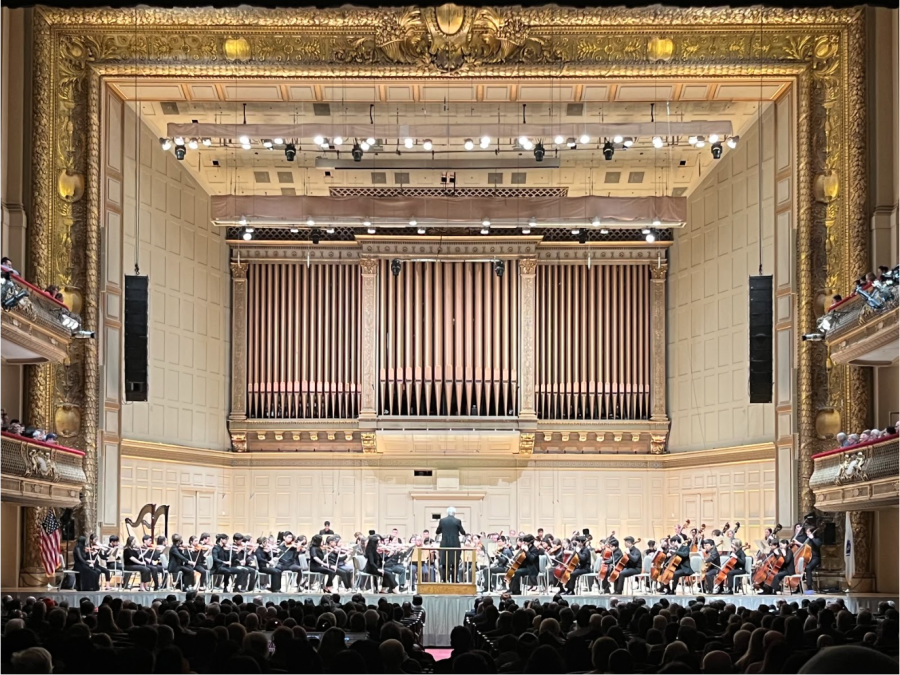A night with the Boston Philharmonic Youth Orchestra
While the musicians are young, a mix of high school and college students, their immense skills are a product of practice, dedication, and passion.
December 7, 2022
Boston’s Symphony Hall is a sight to behold. The ornate golden framing around the stage evokes the image of a classical painting hung in a museum. For the afternoon on November 20th, the musicians of the Boston Philharmonic Youth Orchestra on stage are the subjects of the painting, all seated and eager to play.
The primary subject of this painting is the conductor, Maestro Benjamin Zander. At 83 years old, the British conductor holds himself with such a youthful vigor and is ripe with eccentric energy. His halo of snow-white hair completes the image of a mad scientist, and his passion for classical is clear. Before the concert begins, he tells the audience that he believes there is no such thing as someone who dislikes classical music, only those that have yet to discover it.
The maestro informs us that when Beethoven wrote Symphony No.5, he was losing his hearing, and was unsure if the piece would be his last. The first few notes played are perhaps the most iconic in the entirety of classical music history. And yet, it feels as if I am hearing it for the first time.
Each of the four movements blends together to create a singular masterpiece, the silence between each creating an air of anticipation. As the musicians play, they are not just musicians, but also take on the roles of dancers. The soft and consuming force of the sound makes the musicians look like they are blades of grass, swaying with the wind.
After the intermission, the maestro once again talks at the podium, preparing us for what we are about to hear. He explains that Ein Heldenleben’s theme is that of a critic against a hero. Strauss, the composer, is often imagined as the hero, and music critics as the anti-hero. There is a single violin that serves as the hero’s love interest, and many believe that it is meant to be his wife, Pauline.
The music is layered and compounding, and as the maestro states, “the music gets so complicated and opaque… at some points 35 different voices can be heard.” The voices all complement each other, and the imagery is so vivid in every part. As I listen to the music, I feel as if I am with Strauss while he was writing it.
As the maestro puts it, the piece is a “glorious tapestry of sound.” As the music weaves in and out, the roles of the instruments become clear. The woodwinds are the villain, and the maestro informs us he asked them to play as grotesquely as possible. The woodwinds are beautifully grating, as if brandishing swords against the stringed instruments.
We are taken through the throes of battle, into victory, and back into battle again. The struggle is apparent, and the victorious ending is incredibly satisfying.
The thunderous finale is followed by roaring applause. The standing ovation lasts for ten minutes, and it is more than deserved. While the musicians are young, a mix of high school and college students, their immense skills are a product of practice, dedication, and passion.
I cannot recommend the experience of seeing the symphony enough. The environment itself is spiritually healing, as Symphony Hall is regarded as one of the finest symphony halls in not just the country, but the world. The experience of a live classical symphony is unlike any other. You are captured by the music in a way that cannot be replicated with speakers. It’s an experience to cherish, and I plan to return soon.








